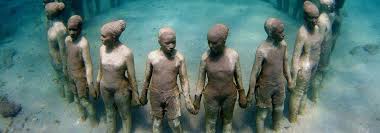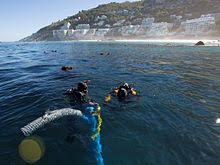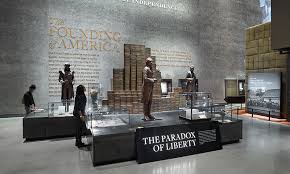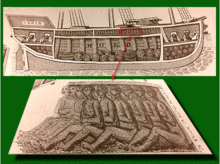USA: The Smithsonian Museum of African American History and Culture.
- oldbagonaplane
- Oct 1, 2019
- 4 min read
Updated: Aug 4, 2022
The Smithsonian Museum of African American History and Culture opened it's doors in much simpler times. President Obama was in the White House and for a few short years it seemed that the world no longer needed reminding that black lives did indeed matter. With the tragedy and trauma of 2020, now is really the time when we must all make efforts to understand history and celebrate the achievements of African Americans. October is Black History month, and it is the perfect time to plan a trip to Washington, DC to visit this very important reminder of our history as a nation. The museum is currently open Wednesday-Sunday and if you can't get to DC, there is a lot of information on their website to explore.
https://nmaahc.si.edu

This article was originally posted in 2018
Cape Town, South Africa, is a city surrounded by an abundance of natural beauty. When my kids were small, we would enjoy going to the Cape of Good Hope, playing pirates and jumping around on the shipwrecks that dot the beaches along the Shipwreck Trail.
I thought nothing more about these shipwrecks apart from what they added to the beauty and the vastness of the beaches. That is, until I visited the Smithsonian Museum of African American History and Culture in Washington, DC.
In 2008, the Slaves Wrecked Project, a research, and education initiative was launched to recover the history of slavery ships that were lost at sea. In 2011, they began retrieving artefacts from what had originally been thought to be a Dutch merchant ship off the coast of Camp's Bay, in Cape Town. It was discovered that these were the remains of the Portuguese slave ship Jose-Paquete de Africa. It is with these remnants, and artefacts on loan from the Iziko Museums of South Africa, that the Museum of African American History and Culture (MAAHC) begins its magnificent story.
Guests of the museum are shuttled three levels below ground into cramped a dark space, thus begins a stark history lesson of the African population of the United States. Upon exiting the lift, you encounter a lesson on the African continent; the map of around 1400, the tribes and their leaders and their customs. You also learn of the history of slavery, and how it came to be that human beings were initially sold, then stolen, demarcated by colour and then dehumanised for the sole purpose of free labour.
This brings us to the wreck of the Jose-Paquete de Africa. This ship collected its cargo from the beaches of Mozambique and though many slave ships were lost at sea, the Jose-Paquete remains unique in that while the captain and crew all survived, over half of the human cargo was left, still shackled, to drown inside the sinking ship.

The museum’s exhibition creates a timeline of the African American experience. Visitors progress through time as they move through the museum. From slavery, to freedom, to segregation, discrimination, and Jim Crow. Higher floors examine the Civil Rights Movement, and the Black Power movements of the 1960s, onto the success stories of the past 45 years, including Barack Obama and Oprah Winfrey, and then onto the Black Lives Matter campaign.
In The upper levels of the museum we find the Communities gallery, the Power of Place gallery, the Double Victory gallery, which was an initiative for African Americans to both serve the country abroad while ending racism at home. Furthermore, the Sport Gallery and finally the Culture Gallery, showcase the success and progress of the African Americans, and the impact these individuals have made on American history. Exhibitions feature milliner Mae Reeves, and Madame CJ Walker, who became the first American female millionaire by developing a line of beauty products specifically for African American women.
John Dominis’s photograph of Tommie Smith and John Carlos giving what was interpreted as a Black Power salute at the 1968 Mexico City Olympic medal ceremony of the 200-meter race, is one of the most recognised photographs of the 1960s. A statue recreating the image is on display in the MAAHC sport’s gallery helps visitors get a closer look at this snapshot of history and the intricacies of the runner’s silent protests. Tommie Smith and John Carlos are not wearing shoes to raise awareness to Black poverty. Smith wore a black scarf around his neck to represent Black Pride, while Carlos wore his track jacket unzipped to identify with blue-collar workers. He also wore a necklace of beads to represent anyone who had been lynched, killed, tarred or thrown overboard during slavery’s Middle Passage. Peter Norman, the Australian runner who placed second, wore an Olympic Project for Human Rights badge in protest of his government's White Australia Policy.
The building itself was designed by Freelon Group/ Adjaye Associates/David Brody Bond to be beautiful and yet reflect the dark history of African America. The building itself is a box-like structure, with an exterior frame of an inverted pyramid, three part corona. The corona is covered with a "scrim", which is a bronze-aluminium screen perforated with designs originating from African American communities in South Carolina and Louisiana.
Visitors can stop for refreshments at the Sweet Home Café. This is no ordinary museum canteen, this is a 400 seat cafeteria-style/food court style eatery that serves traditional food reflecting the indigenous delicacies of different locations and cultures throughout the United States

It was difficult for me, but I made it all the way through the museum without welling up with tears. That is, until I got to the Oprah, ‘you get a car!’ video, at which point I believe I bawled loudly. I love Oprah.
The Smithsonian Museum of African American History and Culture
1400 Constitution Avenue, NW
Washington, DC 20560 USA
nmaahc.si/explore
discoverafrica.com
oprah.com
iziko.org.sa
blacklivesmatter.com
myblackhistory.net
history.com/1968-mexico-city-olympics-black-power-protests
madamecjwalker.com
#nmaach #washingtondc #donaldtrumpruinsalmosteverything #discoverafrica #shipwrecks #capetown #myblackhistory #history.com #sweethomecafe #pulmanrailwaycar #frelongroup #1968olympics #tommiesmith #johncarlos #peternorman #madamecjwalker #oprahwinfrey #iloveoprah


























Comments